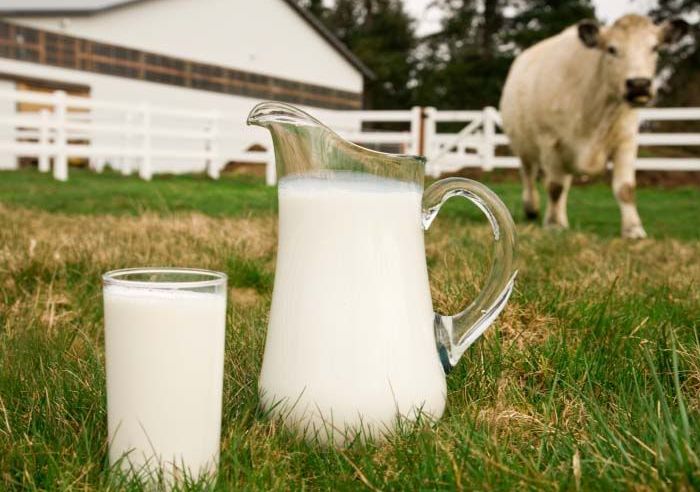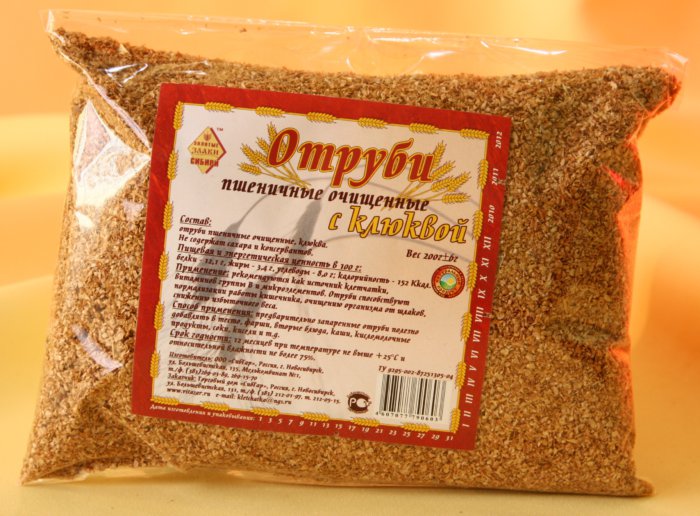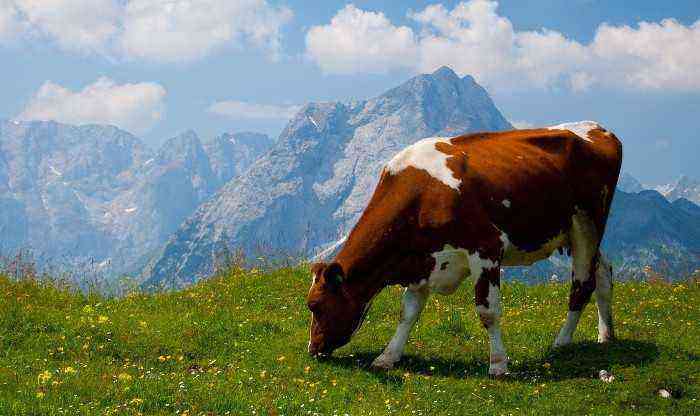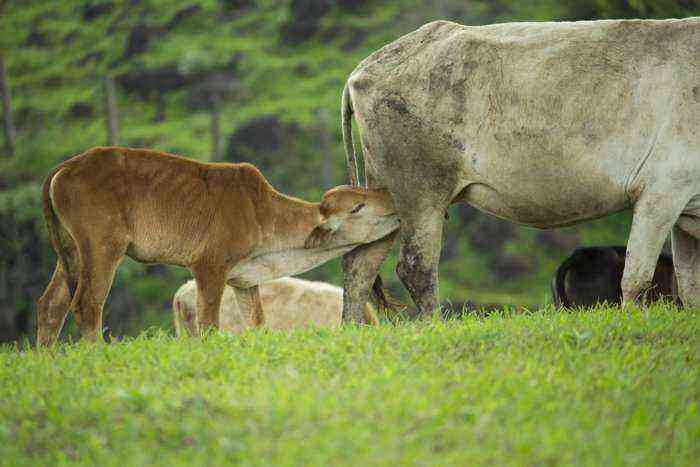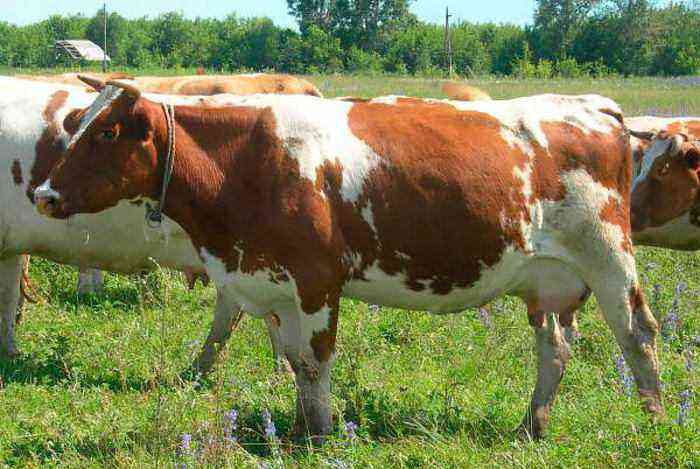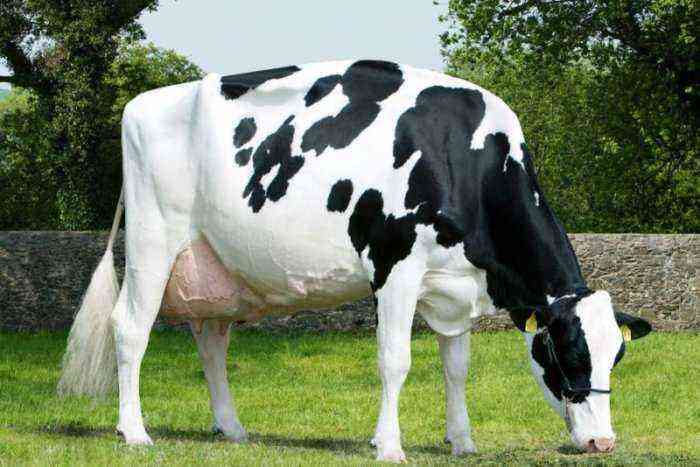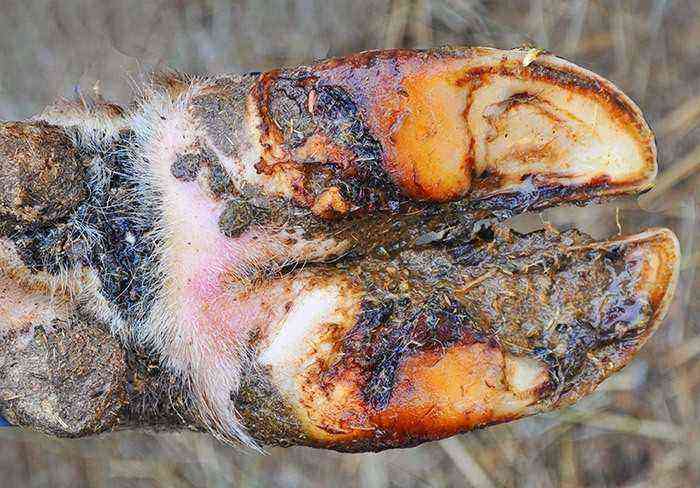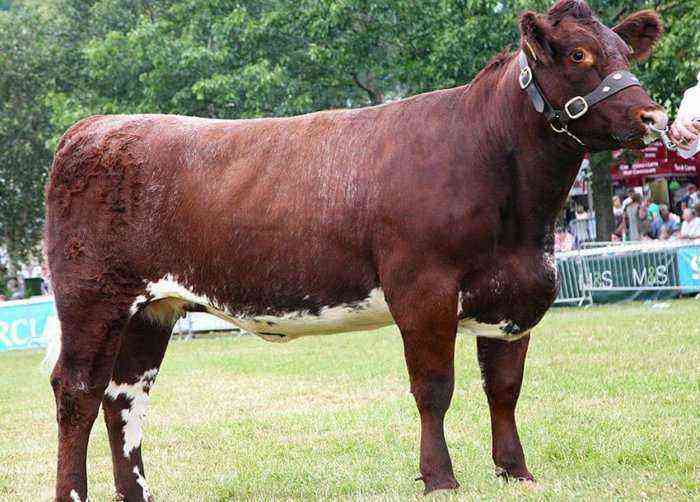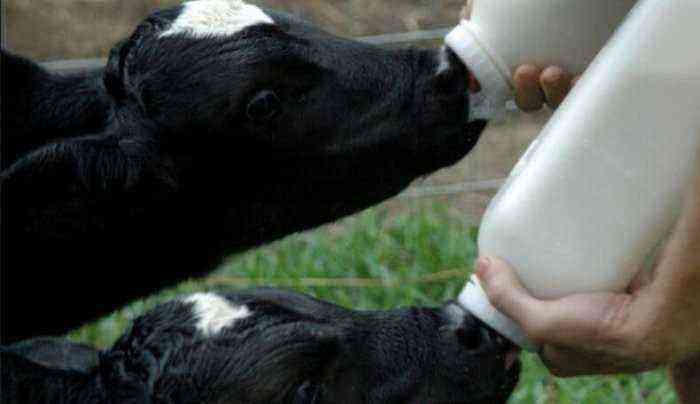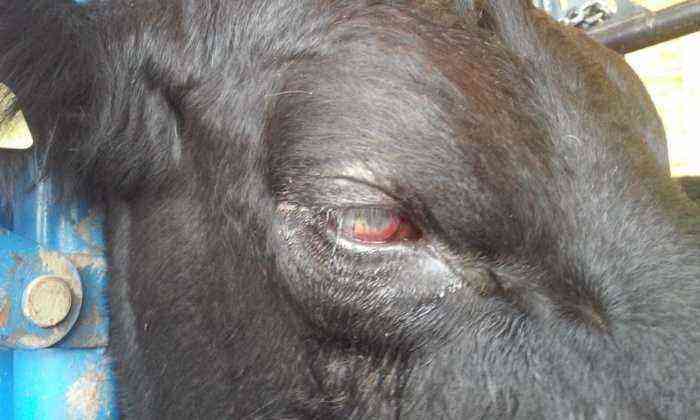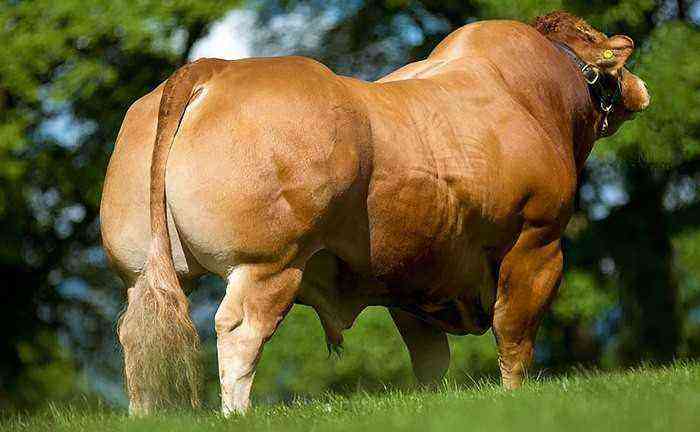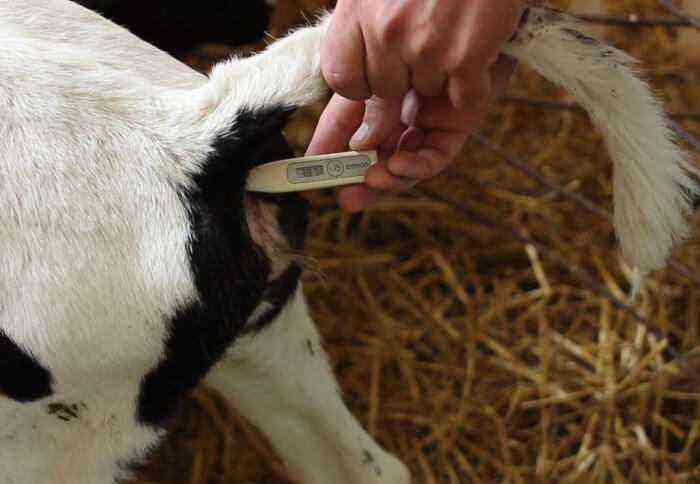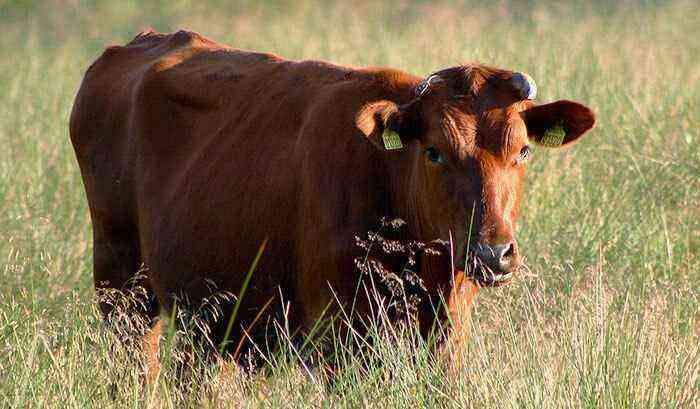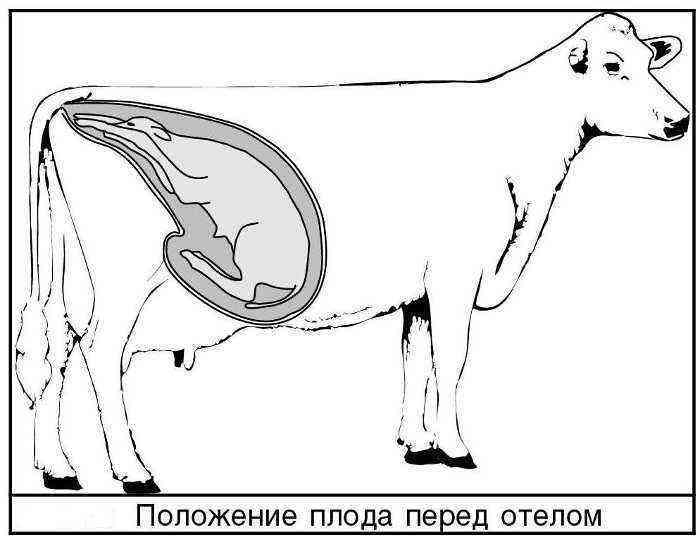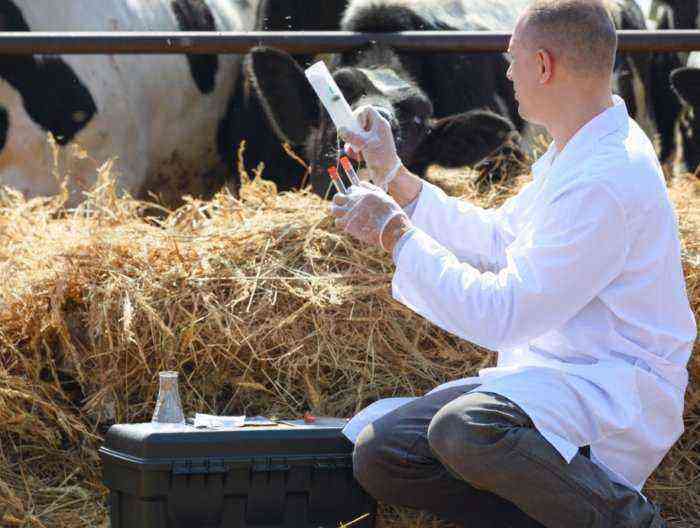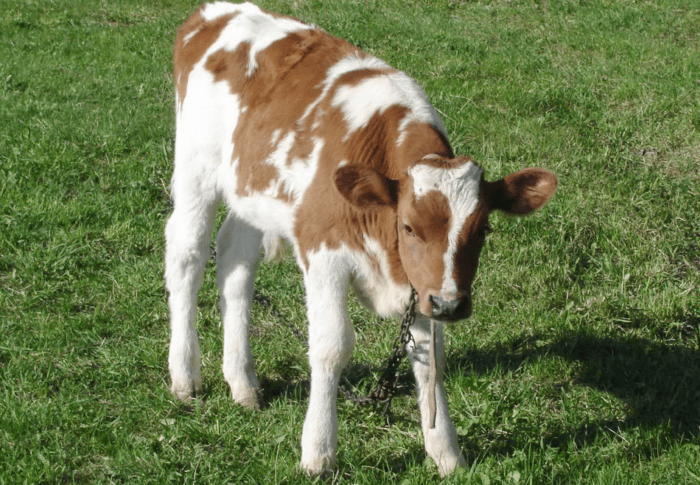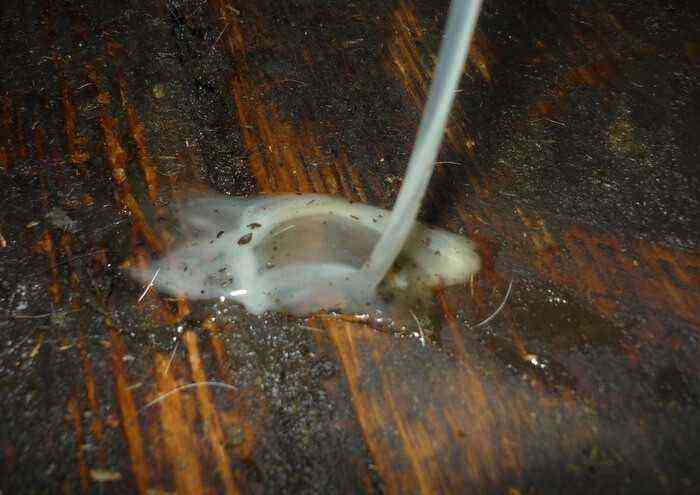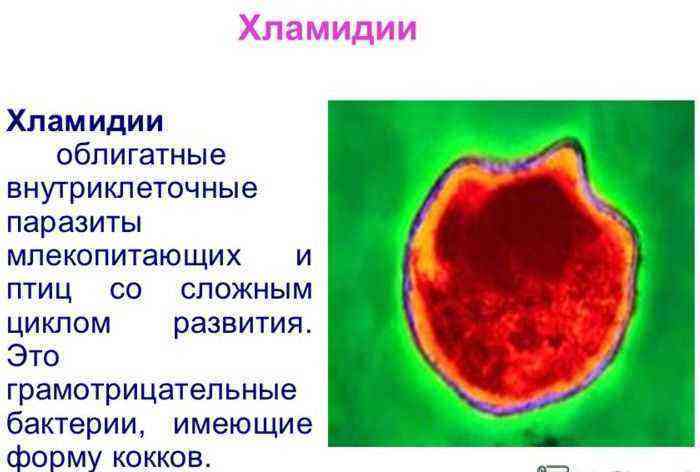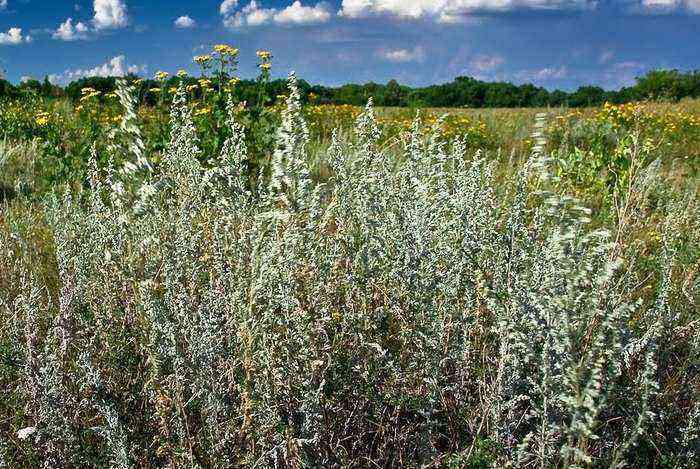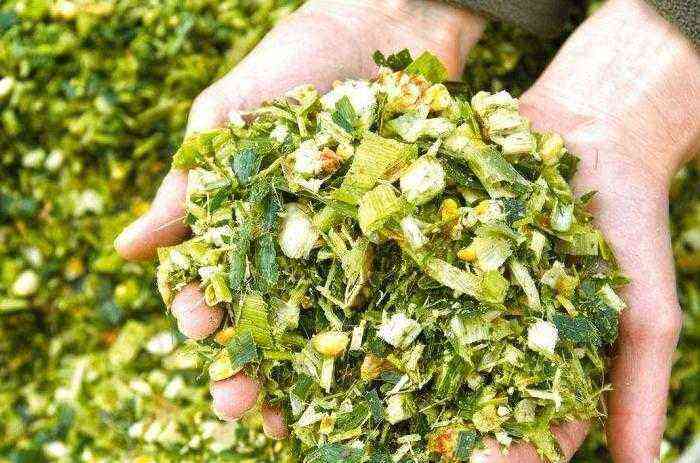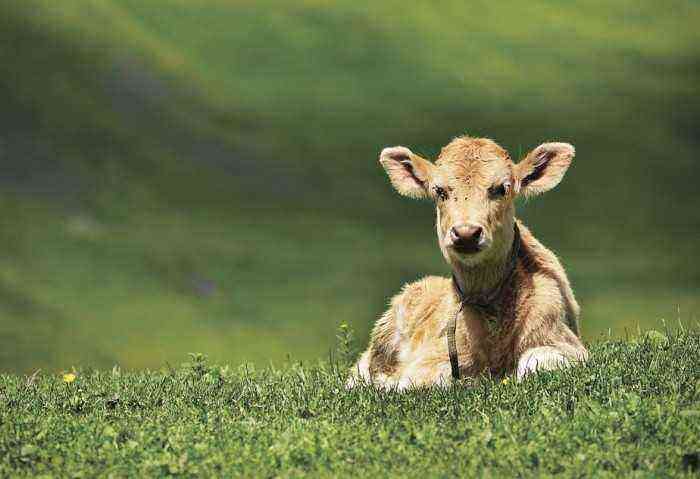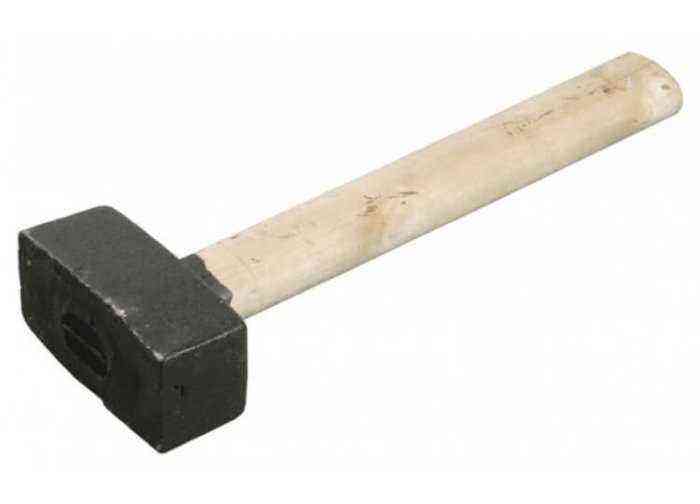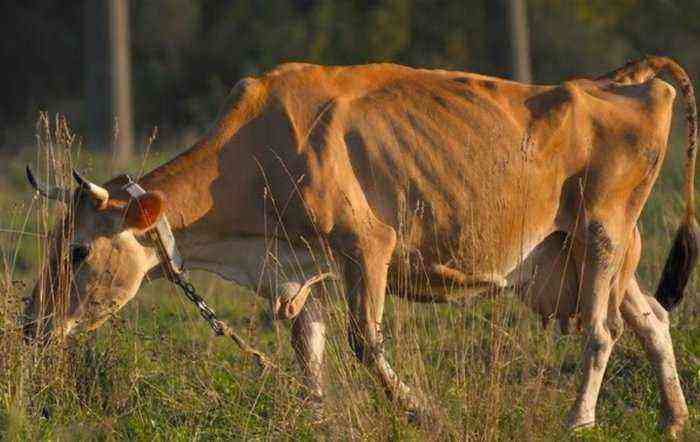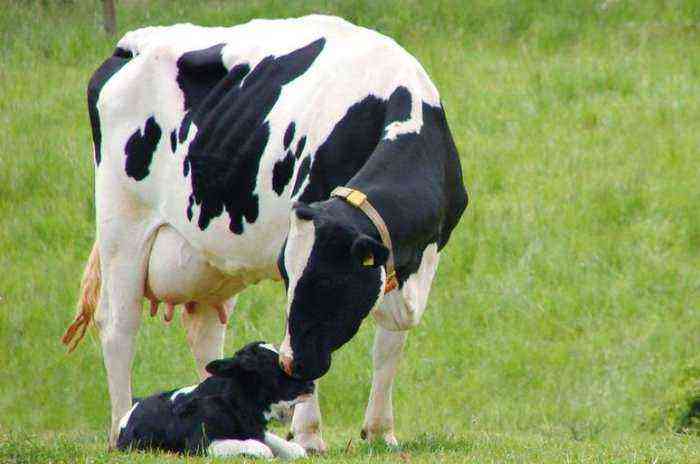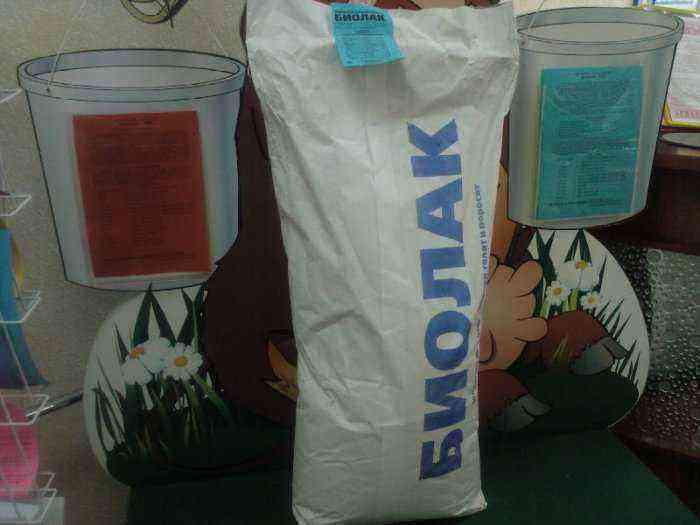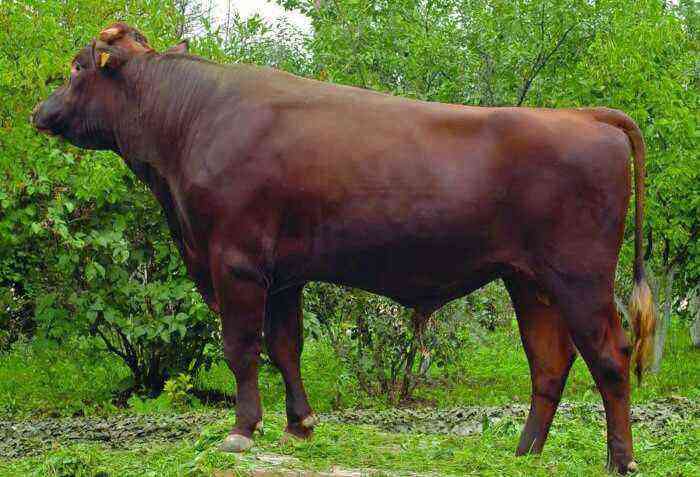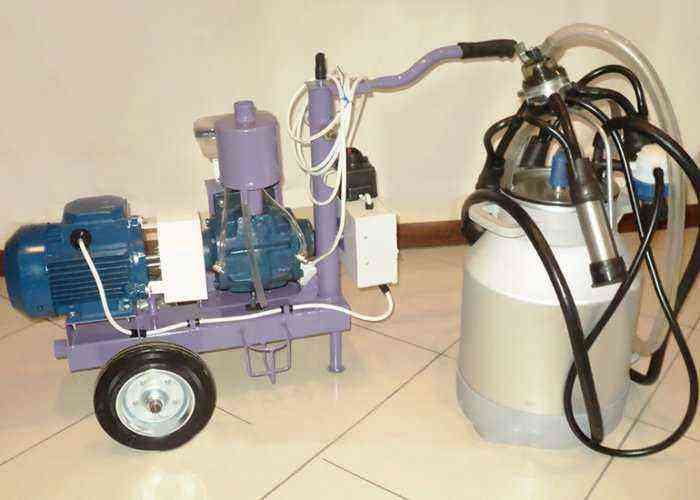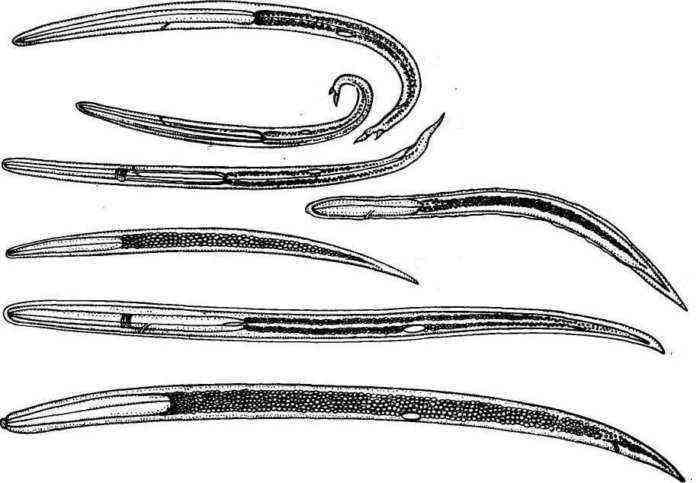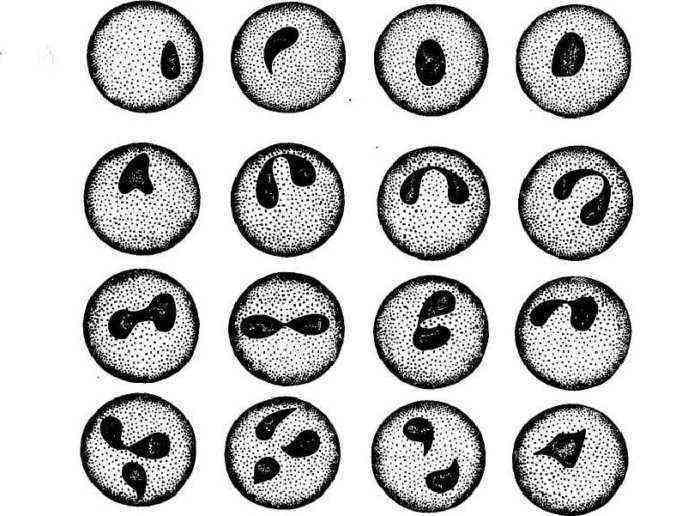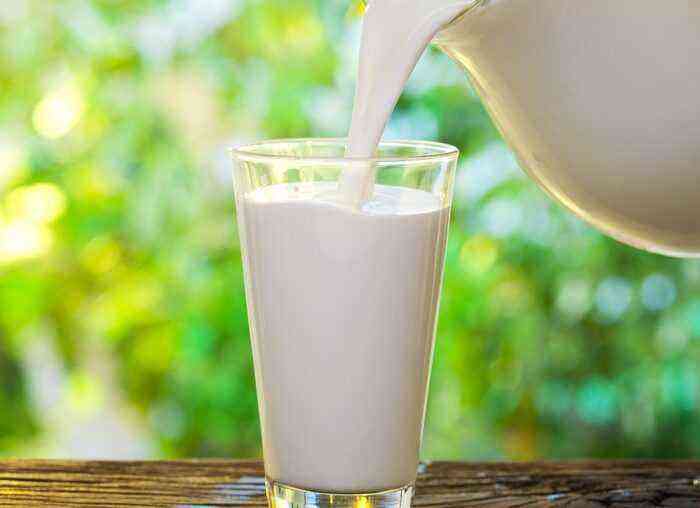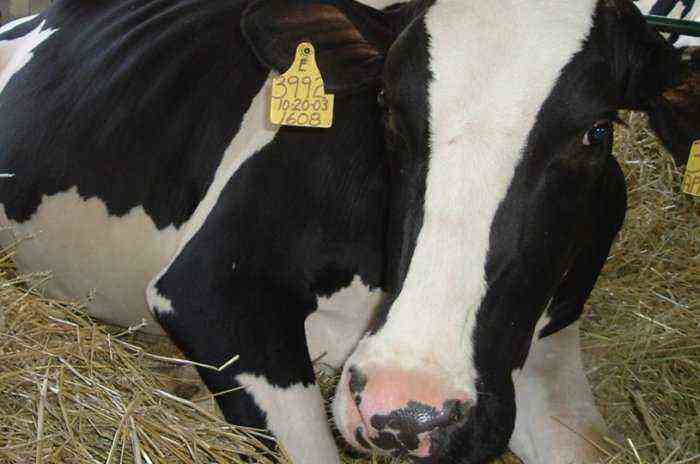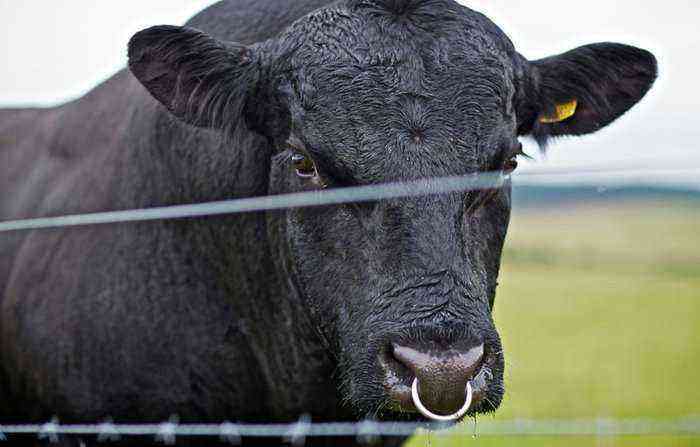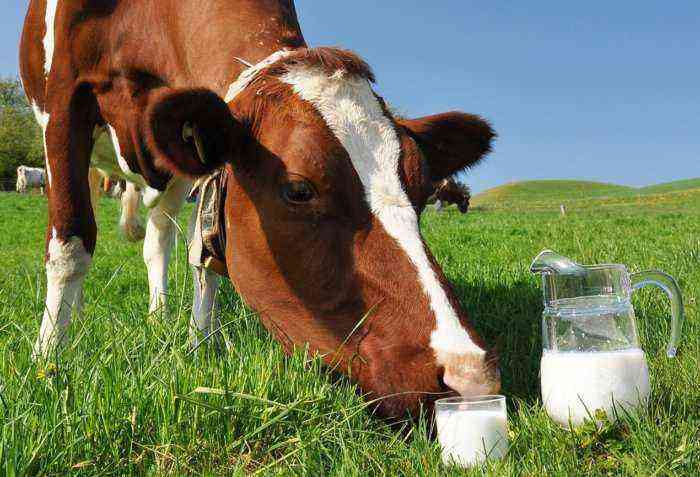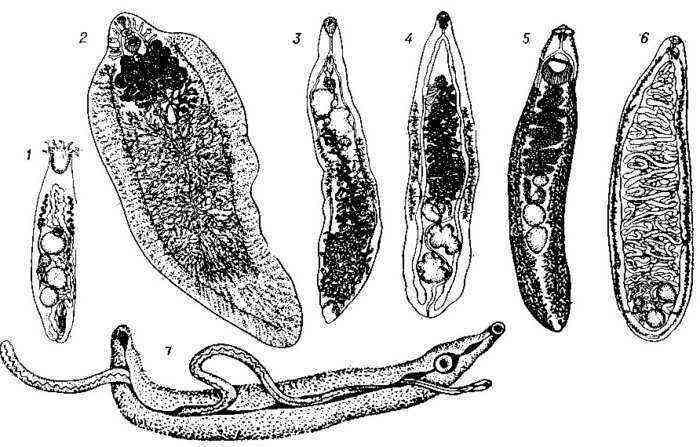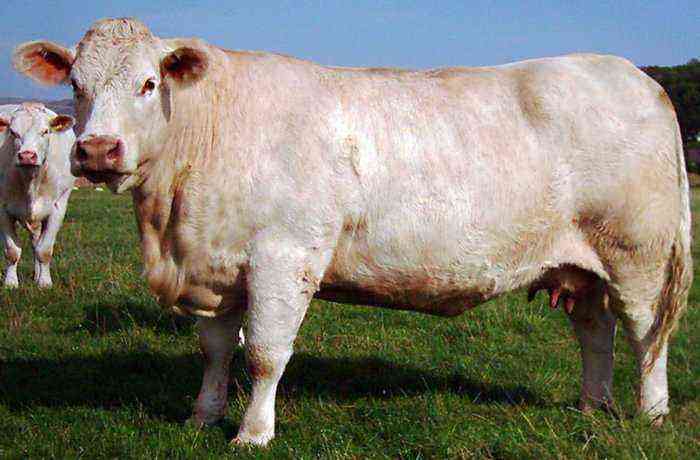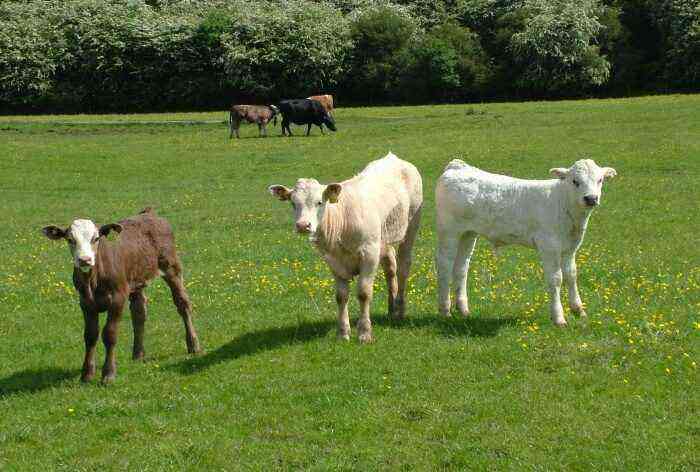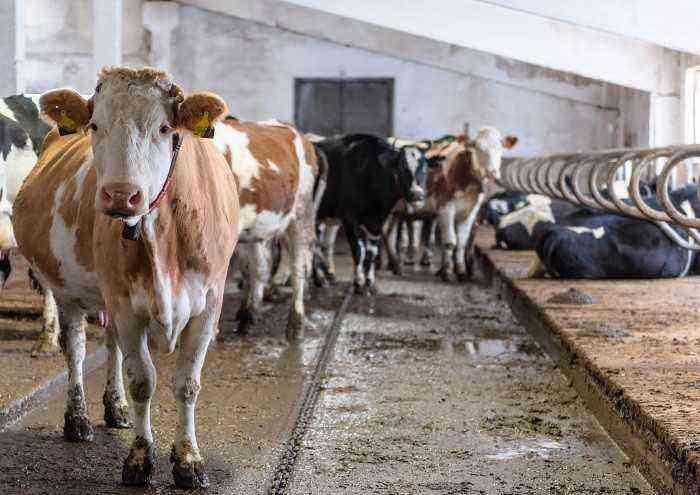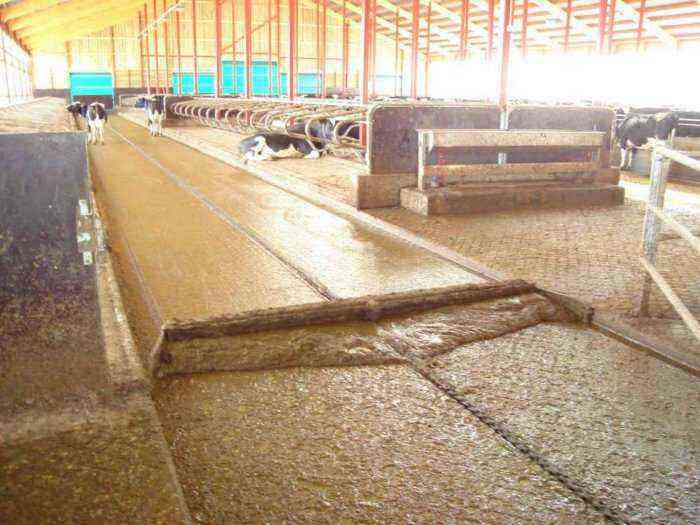Pregnancy and childbirth are extremely stressful times in a cow’s life. The hormonal background changes significantly, the reserves of minerals and nutrients that go to the growth of the fetus are intensively reduced, certain complications can be traced. And in this case, only proper feeding of the cow after calving will ensure her health and high productivity in the future.
Cow with calf after calving
Types of feed
As for nutrition, the cow is a rather unpretentious animal. Therefore, in order to provide cattle with all the necessary vitamins and minerals, breeders use various feed combinations. Most often used for this:
Green food
Such food should form the basis of the animal’s entire summer diet. This type of food includes various meadow greens that grow on natural pastures or are grown on arable land. Fresh herbs for cows are a natural source of energy, protein, amino acids and vitamins. Especially in this regard, the greens of legumes stand out.
Reference. Green food is quickly absorbed by the digestive system and quickly brings weakened animals back to normal.
roughage
This category includes hay and straw. They are the main replacement for green fodder in winter. Hay in its nutritional value, vitamin composition and protein volumes is only slightly inferior to fresh greens. 1 kg of this product contains approximately:
- 8 g crude protein;
- 6-6,3 g calcium;
- 1,8 g of phosphorus.
The hay of cereals and legumes is considered the most valuable.
Important! Straw (wheat or barley) is used as a way to compensate for the shortage of hay supplies. Vitamins and protein in it is much less.
Juicy forages
Root crops, vegetables, silage, haylage are considered succulent feeds. They contain quite a lot of carbohydrates, contribute to an increase in the animal’s appetite, and improve the digestibility of drier foods. In addition, such food makes up for the lack of fluid in the body. The most commonly used for feeding potatoes, carrots, beets, pumpkin, corn silage.
Corn silage
Concentrates
Concentrated food for cows is represented by various compound feeds, as well as grain, cake, bran. They are an indispensable element of feed mixtures for a cow, as they provide her with the bulk of protein and energy.
Macro and microelements
The body of a cow is a complex system, for the optimal functioning of which a huge variety of different substances that come with food are needed. At the same time, conditionally, all these substances can be divided into macroelements and microelements. The main macronutrients include:
- Calcium. It is the basis of the bones and teeth of a cow, is responsible for the functioning of enzymes, blood clotting, and heart function.
- Phosphorus. Controls the absorption of calcium. In addition, the lack of this element leads to a slowdown in growth, a decrease in the digestibility of food, and a decrease in productivity.
- Magnesium. It is an essential component of enzymes.
- Potassium. Controls the work of the heart, transmission of nerve impulses, acid-base balance.
As for trace elements, among them the main ones in the body of cattle are:
- Chromium. Responsible for interaction with insulin.
- Cobalt. Helps animals synthesize vitamin B12. Promotes an increase in appetite.
- Copper. Plays an important role in the chemical processes occurring in the blood.
- Iodine. Plays an important role in the production of hormones. Deficiency leads to impaired reproductive function and general deterioration of health.
- Iron. Responsible for the transfer of oxygen through the bloodstream.
Feeding
A balanced diet of pregnant and calving cows plays a key role in ensuring the health of both mother and calf. Moreover, for each period of such a state of the animal, its own composition of feeding is assumed.
Pregnant cows
During pregnancy, a balanced diet should be the main task of the breeder. In the first half of this period, emphasis should be placed on proteins and energy, which the cow intensively spends on milk production. In this case, combinations of hay and concentrates are suitable. Also, with the help of mineral supplements, it is necessary to ensure the full norms of micro and macro elements.
Milk production will decrease over time
Over time, the milk production of the animal will decrease. At the same time, you should not change the diet or reduce the amount of food. Because it is at this time that the fetus develops especially quickly and it needs to provide all the necessary nutrients. In the last 3 months of pregnancy, protein and energy volumes need to be increased even more so that childbirth goes smoothly. 3 weeks before birth, the amount of food is reduced so that the animal does not become obese.
The composition of food per day for a cow (400 kg) in winter includes:
- Rough feed – from 10 to 12 kg.
- Root crops and silage – at least 12 kg.
- 1,5 kg of concentrates.
dairy cows
For lactating cattle, a specific ration is based on weight, milk production and age. In general, at least 100 kg of succulent feed is required per 8 kg of dairy cow weight. The norm for roughage is 1-3 kg. Concentrates make up at least 1,5 kg of the total feed volume.
In general, feeding is based on three main components:
- Main feed. Includes predominantly roughage (straw, hay, husks). It makes up at least 50% of the diet. Responsible for the replenishment of protein and vitamins.
- Compound feed. Prepared on the basis of various cereals and vitamin supplements. Give the animal every 4 hours.
- Balance food. Assumes alignment to the required norm of the quantity and quality of nutrients supplied with the main feed.
The cows then calved
An important point is the question of how and what to feed the cow after calving. Feeding animals in this period must begin with small norms. Immediately after calving, the cow is given about 5 kg of hay per day or replaced with 8 kg of green food. On the second day, the dosage of roughage is increased by 1 kg and 1 kg of wheat bran mash is added to the diet.
Wheat bran
By day 4-5, the total amount of food can be increased by another 2,5 kg. And most of this increase is high-quality compound feed. At the same time, succulent feed should be gradually introduced. The daily rate should be increased so that by the 10th day the cow has reached the standard amount of food.
Attention! In the period after childbirth, it is extremely important to provide the animal with a sufficient amount of vitamins and minerals. Vitamins B and E are especially important. Of the minerals, calcium, potassium and phosphorus must be introduced into the diet. As a rule, special additives are used to achieve this goal.
Possible risks and problems
After calving, a weakened cow is especially susceptible to various diseases. The main complications of such a plan can be:
- postpartum paresis. Symptoms are cold ears, paralysis of the hind limbs, lethargy and lack of appetite.
- Ketosis. Accompanied by rapid exhaustion and refusal to feed.
- Mastitis. With such a disease, the udder becomes inflamed and an infection develops in it.
- Mastitis. Edema of the udder develops against the background of a general circulatory disorder. May be accompanied by pain, cessation of milk production, loss of appetite.
Also, if the diet changes too abruptly, the cow may develop digestive problems. They can be eliminated by introducing probiotics into the diet. The enema will help remove food debris from the intestines.
Conclusion
It should be constantly remembered that the protective mechanisms of a cow after calving are extremely weak and diseases in her body develop very quickly. That is why it is necessary to immediately provide the animal with proper nutrition, which will help restore strength and normal functioning of the body.
https://youtu.be/QC1rkRcD9d0

